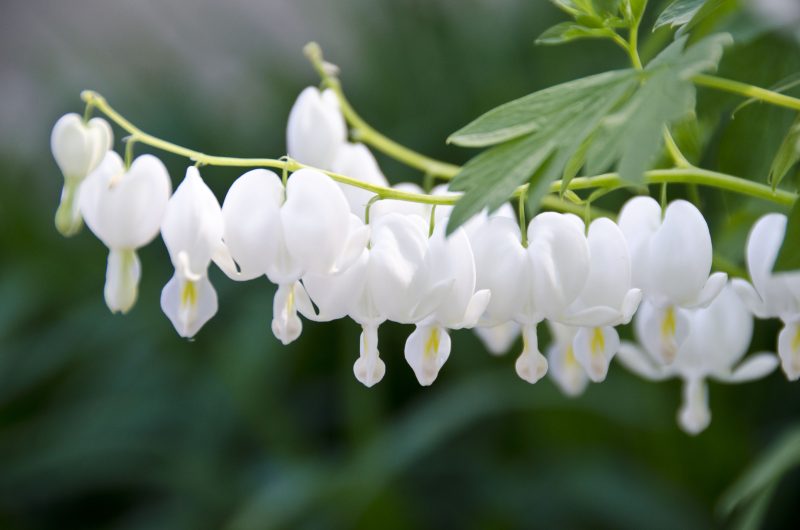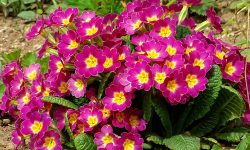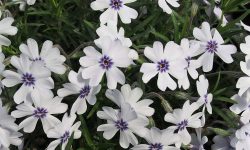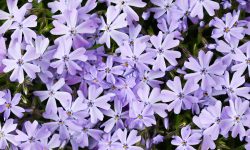Bleeding hearts captivate gardeners with their delicate, heart-shaped flowers that dangle gracefully from arching stems. Known for their romantic charm and soft pastel hues, these perennials add a magical touch to any shaded garden or woodland setting. Understanding exactly when bleeding hearts bloom is key to planning a garden that bursts with their enchanting blossoms at just the right time, ensuring you never miss their fleeting, spectacular display.
Timing is everything when it comes to enjoying the full beauty of bleeding hearts. Their bloom period is closely tied to seasonal changes and environmental conditions, making careful planting and care essential for vibrant, long-lasting flowers. In this guide, we’ll explore the best times to plant, factors influencing bloom cycles, and expert tips to help you nurture stunning spring blooms year after year.
Understanding the Blooming Season of Bleeding Hearts

Bleeding hearts (Dicentra spectabilis) are cherished for their unique, pendulous flowers that bring delicate charm to spring gardens. Understanding their blooming season is essential for gardeners eager to maximize the visual impact and longevity of these plants. Typically, bleeding hearts bloom from mid-spring to early summer, with the peak flowering period lasting about four to six weeks. This relatively short bloom window makes it important to time planting and care precisely.
The timing of blooming is influenced by several factors including local climate, soil conditions, and plant variety. In cooler climates, bleeding hearts may begin flowering as early as April, while in warmer regions, blooms often appear later, sometimes stretching into early June. Soil temperature and moisture also play crucial roles; consistently cool and moist conditions encourage prolonged blooming, whereas excessive heat or drought can cause flowers to fade quickly.
Bleeding hearts are herbaceous perennials, meaning they die back to the ground after their blooming season and enter a dormant phase throughout the summer. This dormancy is natural and helps the plant conserve energy for the following growing season. After flowering, the foliage gradually yellows and withers, signaling that the blooming cycle has ended.
For gardeners aiming to extend the visual interest, planting different varieties or staggering sowing times can create a succession of blooms. Some cultivars also rebloom lightly in late summer or early fall if given optimal conditions and proper care. Understanding this natural rhythm allows gardeners to plan and nurture their bleeding hearts for stunning spring displays year after year.
Factors Affecting When Bleeding Hearts Bloom
Several key factors influence the timing of bleeding hearts’ blooming, making it important for gardeners to consider these elements to achieve vibrant and timely flowers. First, climate plays a crucial role. Bleeding hearts thrive in temperate zones and are sensitive to temperature fluctuations. In cooler climates, lower spring temperatures delay blooming, while warmer regions may see earlier flower emergence. Seasonal weather patterns such as late frosts or sudden heat waves can also impact the start and duration of the bloom period.
Light exposure is another significant factor. Bleeding hearts prefer partial to full shade, especially in warmer climates, as intense sunlight can stress plants and cause early wilting of blooms. Shaded, cooler spots help prolong flower life and promote healthy development.
The soil conditions directly affect plant health and bloom timing. Well-draining, nutrient-rich soil encourages robust root growth, which supports timely flowering. Conversely, poor or compacted soil can delay blooming due to weak root systems.
Finally, plant age and variety influence bloom schedules. Young plants or those grown from seed often take longer to bloom, usually in their second year, while mature nursery transplants may flower sooner. Different cultivars also have varied bloom times, with some early bloomers and others that flower later in the season.
Understanding these factors helps gardeners plan better for beautiful, well-timed bleeding heart blooms.
Best Bleeding Heart Varieties for Early and Late Blooming
Choosing the right bleeding heart varieties can extend your garden’s flowering season by incorporating both early and late bloomers. For those seeking early blooms, varieties like Dicentra spectabilis ‘Alba’, known for its pure white flowers, and Dicentra eximia are excellent choices. These varieties typically begin flowering in mid to late spring, offering delicate and elegant blossoms that brighten shaded garden corners early in the season.
For gardeners wanting to enjoy bleeding hearts later into the season, Dicentra formosa and the hybrid Dicentra ‘Gold Heart’ are great options. These varieties tend to bloom later and often have longer flowering periods, sometimes extending into early summer. Their flowers range from soft pinks to vibrant yellows, adding variety and contrast to your garden palette.
Additionally, newer cultivars such as Dicentra ‘King of Hearts’ provide extended bloom times and robust growth, making them suitable for both early and late-season color. Combining these early and late bloomers allows gardeners to enjoy a continuous display of the graceful, heart-shaped flowers throughout spring and into summer.
Selecting a mix of these varieties ensures a dynamic and prolonged blooming period in your garden.
How to Time Planting for Optimal Bloom
Timing your planting is essential to ensure bleeding hearts bloom at their best and add vibrant color to your spring garden. For most regions, planting bleeding hearts in early spring, as soon as the soil is workable and the threat of frost has passed, gives plants ample time to establish strong roots before their active growing and blooming period. This early start supports vigorous growth and abundant flowers.
In milder climates, fall planting is also an option. Planting in early fall allows roots to develop during cooler, moist conditions, resulting in healthier plants and earlier blooms the following spring. However, fall planting requires protecting young plants from early frosts and ensuring consistent soil moisture.
When starting from seeds, sow indoors 8 to 10 weeks before the last frost date to give seedlings a healthy head start. Transplant outdoors only after the soil temperature reaches around 60°F (15°C). Proper timing, matched to your local climate and planting method, maximizes bloom quality and duration for stunning garden displays.
Preparing Soil and Site for Maximum Flowering
Preparing the soil and choosing the right site are critical steps to ensure your bleeding hearts produce abundant, vibrant blooms. These plants thrive in locations that mimic their natural woodland habitat, preferring partial to full shade where they are protected from intense afternoon sun. Selecting a spot with dappled sunlight or morning sun followed by afternoon shade will help maintain healthy foliage and prolong flowering.
Soil quality plays a significant role in flowering success. Bleeding hearts prefer well-draining soil that retains moisture without becoming waterlogged. Heavy clay or compacted soils can suffocate roots and lead to rot, while overly sandy soils may dry out too quickly. To optimize soil conditions, amend your garden bed with plenty of organic matter such as compost or aged leaf mold. This not only improves fertility but also enhances soil structure, water retention, and aeration.
Before planting, loosen the soil to a depth of 12 to 15 inches to encourage deep root growth. Removing rocks, weeds, and debris will further support healthy development. Testing soil pH is also advisable; bleeding hearts prefer a slightly acidic to neutral pH between 6.0 and 7.0. If needed, add lime or sulfur to adjust pH levels accordingly.
By thoughtfully preparing both the soil and site, you create an ideal environment for bleeding hearts to establish robust roots, grow lush foliage, and produce stunning spring blooms year after year.
Watering and Fertilizing to Support Blooming
Proper watering and fertilizing are essential to support healthy growth and vibrant blooming of bleeding hearts. These plants prefer consistently moist soil, especially during their active growth and flowering period in spring. Water deeply once or twice a week, depending on rainfall and temperature, ensuring the soil remains moist but not waterlogged. Overwatering or allowing water to pool around the roots can lead to root rot and other fungal diseases, so good drainage is equally important. During the plant’s natural summer dormancy, reduce watering as the foliage dies back and the plant’s moisture needs decrease.
Fertilizing bleeding hearts helps provide the nutrients necessary for lush foliage and abundant flowers. Apply a balanced, slow-release fertilizer in early spring to encourage strong growth. Avoid high-nitrogen fertilizers, as these tend to promote excessive leafy growth at the expense of blooms. If your soil is poor or nutrients are depleted, supplement with a liquid fertilizer every 4 to 6 weeks throughout the growing season to maintain vigor. Organic options such as compost tea or fish emulsion are excellent for boosting plant health naturally.
Mulching around the base with organic materials like shredded bark or leaf mold further aids in retaining soil moisture, regulating temperature, and suppressing weeds, indirectly supporting the plant’s water and nutrient uptake. Together, proper watering and fertilizing create optimal conditions for bleeding hearts to thrive and produce stunning spring flowers.
Managing Pests and Diseases to Protect Blooms
Effective pest and disease management is key to maintaining healthy bleeding hearts and ensuring vibrant blooms. Although bleeding hearts are relatively resilient, they can still be vulnerable to common pests like aphids, slugs, and snails. Aphids can cluster on new growth, sucking sap and weakening the plant, while slugs and snails feed on tender leaves and stems. Encouraging natural predators such as ladybugs can help control aphid populations, and organic slug deterrents or barriers can protect plants from slug damage. Regular inspection and early intervention prevent infestations from spreading.
Diseases such as powdery mildew and leaf spot may occur, especially in humid or poorly ventilated environments. To minimize disease risk, plant bleeding hearts with adequate spacing to improve air circulation and avoid overhead watering, which can promote fungal growth. Removing and disposing of infected leaves promptly helps contain spread. Maintaining good garden hygiene and monitoring plants regularly supports overall plant health and maximizes beautiful flowering.
Extending the Blooming Period with Proper Care
Regular Deadheading to Promote Continuous Blooms
Deadheading, or removing spent flowers, is essential for encouraging bleeding hearts to produce more blooms. By cutting off faded flower stalks just above a healthy set of leaves, the plant redirects its energy from seed production back into generating new flowers. This practice not only prolongs the blooming period but also keeps the plant looking tidy and vigorous throughout the spring season. Be consistent with deadheading as soon as flowers begin to fade to maximize its benefits.
Staggered Planting for Successive Flowering
Planting bleeding hearts at different times during the planting season can create a natural succession of blooms. Staggering seed sowing or transplanting intervals by two to three weeks ensures that as one group of plants finishes blooming, another begins. This method effectively extends the presence of beautiful flowers in your garden from early spring into early summer. It is especially useful when growing bleeding hearts from seed or nursery plants.
Optimal Watering and Nutrient Management
Maintaining consistent moisture levels during the active growing and flowering phases supports prolonged blooming. Bleeding hearts prefer evenly moist but well-draining soil. Avoid letting the soil dry out completely, as this can stress the plant and shorten bloom duration. Additionally, feeding the plants with a balanced, slow-release fertilizer in early spring and supplementing with light liquid feeds throughout the blooming period provides essential nutrients that support flower production and plant health.
Protecting Plants from Environmental Stress
Exposure to extreme heat or intense sunlight can cause bleeding hearts to wilt and prematurely end their flowering. Planting in locations with partial shade, especially afternoon shade, helps protect delicate blooms and foliage. Applying organic mulch around the base also conserves soil moisture and moderates root zone temperature. By minimizing environmental stress, you allow the plants to sustain their blooms longer and recover more quickly after flowering.
These practices combined help gardeners enjoy a more extended and abundant display of bleeding heart flowers throughout the spring and early summer.
Preparing Bleeding Hearts for Summer Dormancy
As spring fades into summer, bleeding hearts naturally begin to enter a dormancy phase. This is a vital part of their growth cycle, allowing the plant to conserve energy and survive until the next growing season. Preparing your bleeding hearts properly for this dormancy ensures their health and vigor for future blooms.
Once the vibrant flowers start to fade and the foliage begins to yellow, it’s important to gradually reduce watering. During dormancy, bleeding hearts require significantly less moisture because their root systems are no longer actively growing. Overwatering at this stage can lead to root rot or fungal problems, which can weaken or kill the plants.
Resist the urge to fertilize during dormancy, as nutrient uptake slows down, and excess fertilizer can cause harm. Instead, focus on maintaining well-draining soil conditions and keep the area around the plants free from weeds to reduce competition for resources.
Avoid disturbing the roots during this period, as the plant is vulnerable. You can use the summer dormancy period to plant shade-tolerant companions nearby that thrive in similar conditions, helping maintain garden interest while the bleeding hearts rest.
By understanding and respecting this natural cycle, you give your bleeding hearts the best chance to emerge strong and healthy in the following spring, ready to produce their iconic, graceful blooms once again.
Propagating Bleeding Hearts to Increase Your Garden Display
Propagating bleeding hearts is an excellent way to expand your garden display and enjoy these charming flowers in more areas. One of the most common methods is division, which involves carefully digging up mature plants every few years during early spring or fall. Dividing the root clumps not only rejuvenates older plants but also produces healthy new ones ready to be replanted.
Another propagation method is growing from seed. Collect mature seed pods in late summer and either sow them indoors during late winter or directly outdoors in fall for natural cold stratification. Growing from seed allows gardeners to experiment with different varieties and colors, enriching the garden’s diversity.
Encouraging natural self-seeding is also effective. Allow some flower spikes to remain after blooming so seeds can fall and sprout in the following season. With proper propagation techniques, your bleeding hearts will multiply, creating a fuller, more vibrant spring garden year after year.
Troubleshooting Common Blooming Issues
Insufficient Blooms
If your bleeding hearts produce few or no flowers, it may be due to inadequate sunlight or improper planting depth. These plants prefer partial shade but still need some filtered sunlight to trigger blooming. Additionally, planting too deeply can cause stress, limiting flower production. Nutrient imbalances, especially excess nitrogen, often promote leafy growth at the expense of flowers. Ensuring proper light exposure, correct planting depth, and balanced fertilization can improve bloom quantity and quality.
Premature Wilting of Flowers
Premature wilting often results from irregular watering or excessive heat. Bleeding hearts prefer consistently moist soil, especially during bloom time, but soggy conditions can cause root rot. Prolonged exposure to hot afternoon sun may scorch delicate flowers and foliage. Watering deeply but avoiding waterlogging, along with providing afternoon shade in hot climates, can prevent wilting and extend bloom longevity.
Flowers Fading Too Quickly
Flowers that fade rapidly might be a sign of environmental stress, such as sudden temperature fluctuations or strong winds. These factors can shorten the flowering period and reduce overall plant vigor. Protecting bleeding hearts by planting them in sheltered spots or using windbreaks can help maintain vibrant blooms longer. Additionally, proper mulching retains soil moisture and moderates temperature, supporting flower longevity.
Failure to Bloom in the First Year
Bleeding hearts, especially biennial varieties, often don’t bloom in their first year because they focus energy on leaf and root development. This is normal, but sometimes poor soil nutrition or stress from transplanting can delay flowering even further. Patience is key, but improving soil fertility and minimizing transplant shock through careful watering and mulch application can encourage timely blooms in the second year.
Pest and Disease Impact on Blooms
While bleeding hearts are generally resilient, pests like aphids and slugs or fungal diseases such as powdery mildew can weaken plants, leading to reduced flowering. Regularly inspecting plants and managing pest populations promptly prevents damage. Improving air circulation and avoiding overhead watering reduces fungal risks. Healthy plants are more likely to produce abundant, lasting blooms, so maintaining good garden hygiene and care routines is essential.
FAQ: When Do Bleeding Hearts Bloom? Tips for Stunning Spring Flowers
What is the best time to plant bleeding hearts for optimal blooming?
The ideal time to plant bleeding hearts is early to mid-spring, once the soil is workable and the risk of frost has passed. This allows the roots to establish during cool, moist conditions, promoting strong growth and vibrant blooms in spring. In milder climates, early fall planting is also possible, giving the plants time to develop roots before winter dormancy.
How much sunlight do bleeding hearts need to bloom well?
Bleeding hearts thrive in partial to full shade but still need some indirect sunlight to bloom profusely. Too much direct afternoon sun, especially in hot climates, can stress the plants and reduce flower production. A spot with morning sun and afternoon shade is usually ideal to balance light and protect delicate foliage and blooms.
How often should I water bleeding hearts during their blooming season?
Consistent moisture is important during the growing and blooming period. Water bleeding hearts deeply once or twice a week, depending on rainfall and temperature. Avoid letting the soil dry out completely, but also ensure it’s not soggy to prevent root rot. Reducing watering during summer dormancy is necessary as the plant’s water needs decrease.
Can I propagate bleeding hearts from seed or division to get more plants?
Yes, bleeding hearts can be propagated both ways. Dividing mature plants every 3 to 4 years in early spring or fall helps rejuvenate the plant and expand your garden. Starting from seed requires stratification, with seeds sown indoors before the last frost or outdoors in fall to germinate the following spring. Both methods can effectively increase your plant population.
What are common problems that prevent bleeding hearts from blooming?
Common issues include planting in too much shade, excessive nitrogen fertilizer promoting foliage over flowers, improper watering leading to stress, and pest or fungal infections. Ensuring balanced fertilization, proper light, consistent moisture, and pest management will encourage healthy growth and abundant blooms.
Conclusion
Bleeding hearts provide a stunning display of delicate, heart-shaped flowers each spring, bringing elegance and charm to shaded garden areas. Understanding when they bloom and the factors influencing their flowering allows gardeners to time planting and care effectively. By selecting suitable varieties, preparing the right site, and offering attentive maintenance, you can enjoy vibrant, long-lasting blooms season after season. Whether you’re a beginner or an experienced gardener, these tips will help you unlock the full potential of bleeding hearts in your garden.






